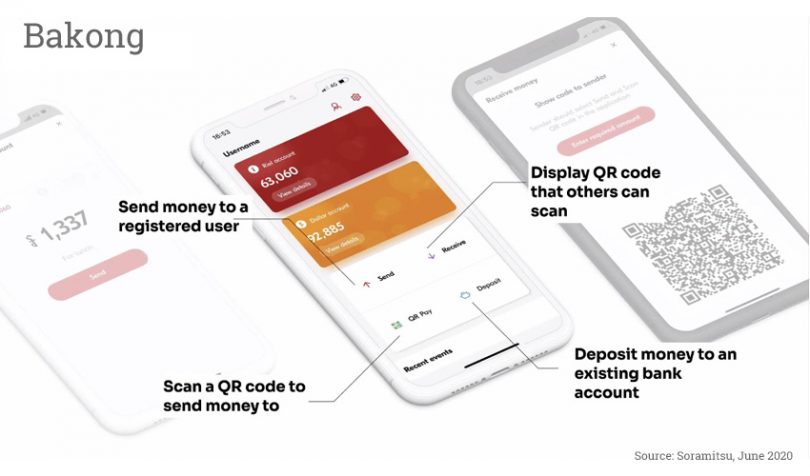Yesterday, the National Bank of Cambodia’s Bakong blockchain payment system officially went into production after an extensive pilot period. The central bank refers to it as a retail central bank digital currency (CBDC). Unlike other CBDC trials, the currency is not natively digital. Instead, it represents tokenized commercial bank deposits of either Cambodian riel or US dollars.
A major reason for launching Bakong is financial inclusion. Cambodia has a high rate of smartphone penetration and more than 100% of the population has a cellphone, clearly some more than one. However, only 22% of people over the age of 15 have a bank account, and an account is not required to use Bakong. Instead, a wallet can be started by receiving money from someone else or by going to a payment agent and exchanging cash for tokenized money.
“We aim to improve financial inclusion, efficiency and security, as well as promote the use of local currencies,” said Serey Chea, Director General at the NBC. “Bakong is Cambodia. It plays a central role in placing all players who use their payments under the same platform, making it easier for users to cross the boundaries between banks and pay each other.”
Other goals are to de-dollarize an economy which still heavily reliant on the daily use of the U.S. dollar. There is also no real-time gross settlement system.
The solution was developed by Japanese blockchain firm Soramitsu which is also the leading firm behind the Hyperledger Iroha protocol, the permissioned distributed ledger technology (DLT) on which Bakong is based. Every wallet is linked to a financial institution.
The central bank controls the master ledger, and commercial banks have nodes that have copies of the relevant data, providing redundancy. So far, 18 financial institutions are involved.
The country’s interbank payment system (FAST) has had its traditional database replaced by DLT.
How it works for consumers
To sign up, a user has to provide a photo ID but also take a selfie. The ID is processed using OCR and the selfie is compared to the ID’s picture.
The mobile app is deliberately designed to be simple, with just four functions. A wallet holder can send money to a registered user or scan someone else’s QR code to send them money. The user can also display their own QR code in order to receive money. And finally, there’s the ability to transfer the balance to a bank account. Those who don’t have a smartphone can use the recipient’s phone number to send money. Also, if there’s no smartphone, it’s trickier to prove identity, so only small value payments can be made.
When payments are made, they are no fees and finality is accomplished within 2-3 seconds.
“Ultimately, Bakong will create an economically comprehensive ecosystem that will benefit all stakeholders in the industry,” said Shin Chang Mun, President of Phnom Penh Commercial Bank.






